Salmon is a popular food. Anywhere you go, kitchens use different varieties of salmon in various dishes. Aside from health benefits, it is also packed with meaty flavors perfect for breakfast preparation to snacks. If you're a beginner in cooking salmon, you may need to learn some cooking hacks like my kitchen measurement cheat sheet.
This article will provide you in-depth discussion about salmon, its varieties, different recipes that go best with it, as well as the tips, techniques and the common mistakes most people do when cooking salmon.
More...
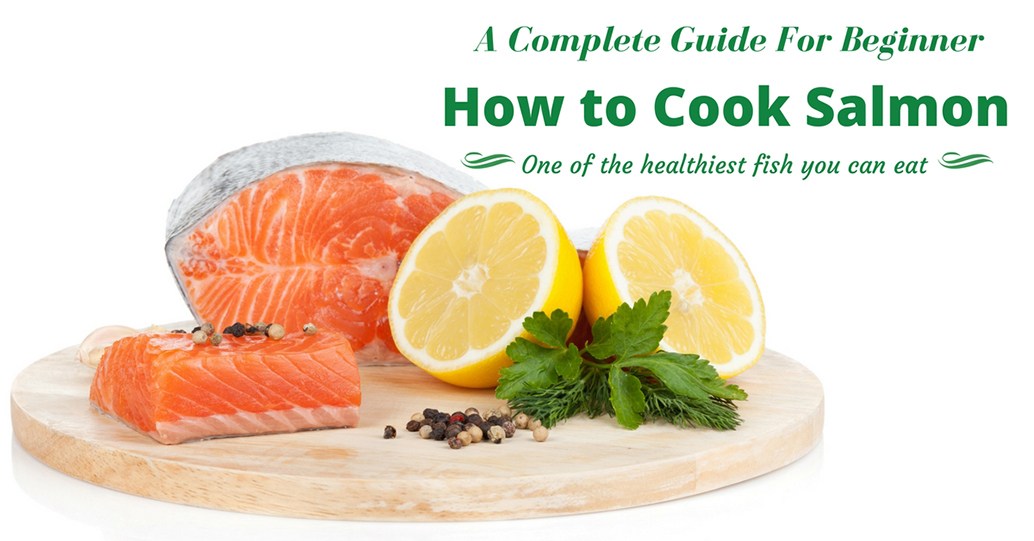
OVERVIEW OF SALMON
What is Salmon?
The term salmon comes from the Latin word, which was also originated from saline, meaning, “to leap.” Salmon are saltwater fish, which is native to Alaska, Pacific Northwest, and California waters.
They are anadromous, which means most of its species are born in fresh water until they migrate and swim through estuaries and upstream as juveniles where they grow into adults, and then go back to freshwaters to spawn and reproduce again.
There are many obstacles that salmon face when they are spawned, making their life a bit miserable for them. For instance, factors such as high temperatures, parasites, predators, and river discharge rates bring harm to a growing salmon. Other factors that endanger salmon include pesticides that are widely used in North America, which contains neurotoxins.
They are great in any preparations such as grilling, poaching, broiling, smoking, roasting, or pickling. They are also used in salads, burgers, tartare and pasta dishes.
Although salmon are very distinct to other commercialized and harvested fish, they are farmed all over the world. In fact, almost 60% of the world’s salmon productions are farmed. In 2015 alone, they were 2,200,000 tons of farmed salmon while they were 880,000 tons of caught salmons.
Wild vs. Farmed Salmon and How to Choose The Right One?
There are important things you need to consider when choosing for a good salmon to cook with most expensive sushi knives. While there are plenty species of salmon, they are also put on the market from two different sources. Salmon is farmed or can be caught in the wild. Which of two produces good meat?
Wild Salmon
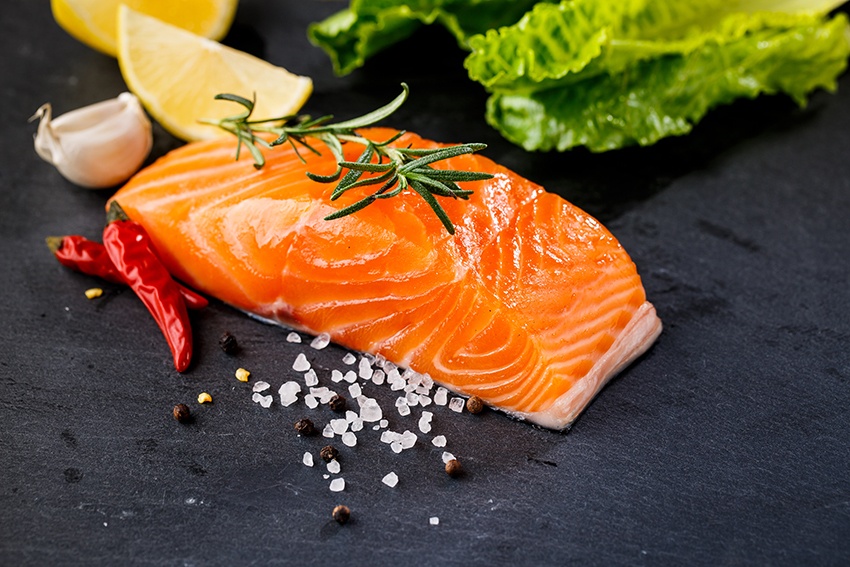
Wild Salmon
If you choose wild salmon, you need to spend more cash. Unlike farmed salmon, wild salmon are allowed to grow at their natural pace in their natural habitat, until they are in the right age to be harvested and caught. Because of the strict policed and acts, harvesting salmon is strictly monitored and regulated.
Because of this, wild salmon is expensive than the farmed salmon, but they are healthier and safer.
Farmed Salmon
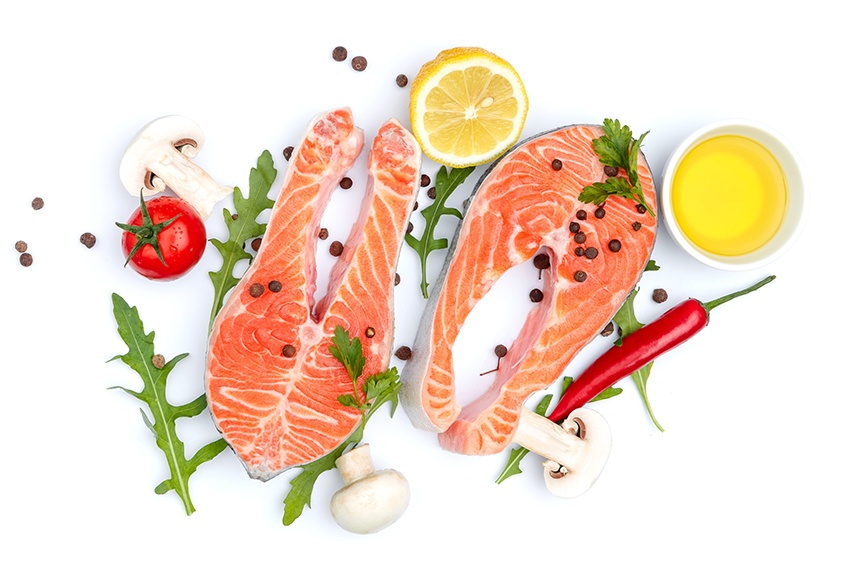
Farmed Salmon
Farmed salmon are raised in a large mass. They are usually raised not in their natural habitat but are kept in small pens. When it comes to their diet, they are fed with unnatural food, which contains dyes, hormones, and antibiotics to treat them against diseases.
Unluckily, because they are often put in small areas that have bad conditions, there is widespread of disease and parasites that affect the overall fish in the farm.
When you want to save money, farmed salmon is ideal to choose because they are inconspicuous and inexpensive compared to wild salmon. However, we advise you to consume farmed salmon, not more than one in a month due to high-level of chemicals in their body.
To keep it short, wild salmon are safer, healthier, but more expensive, while farmed salmon are inexpensive but contain high-level of chemicals.
Wild vs. Farmed Salmon in the Kitchen
When it comes to the meat, because wild salmon have healthier diets, their meat is also better looking and tasting. Other differences include:
- Meat color – a wild salmon, have pinker and brighter color than the farmed salmon. However, farmed salmon are injected with red dye to make them appear pink like the wild salmon.
- Nutritional value – wild salmon have more nutritional value compare to the farmed variety, while the latter also has more PCBs than the former.
What Does Salmon Taste Like?
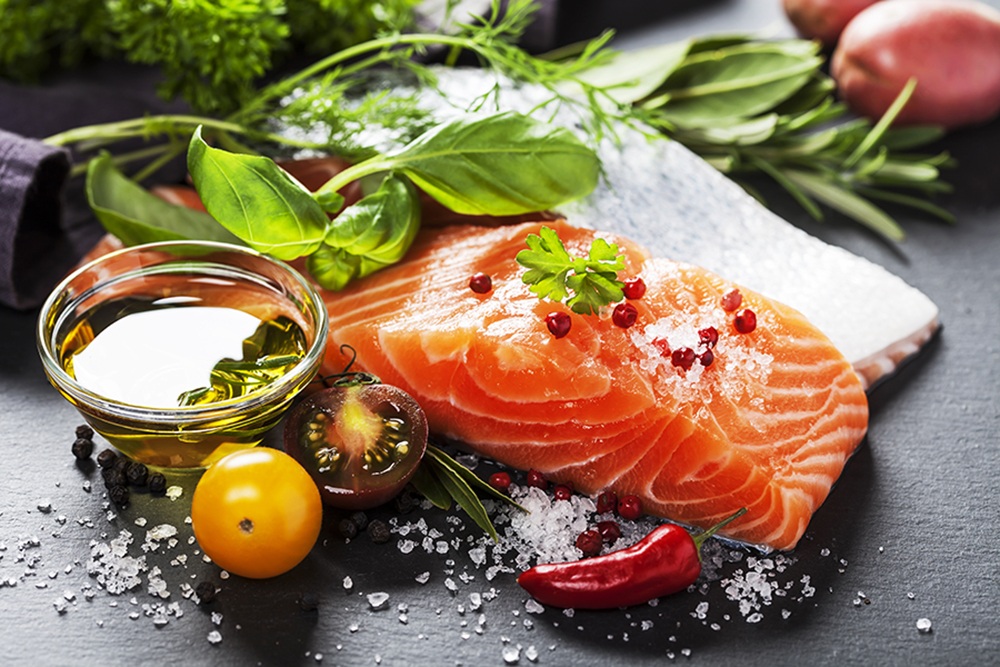
If you do not like the taste of fish, you would probably love salmon! On the table, most people would say that it does not taste like fish and claimed that it is rather rich and meaty unlike other reproduced fish in the market. In fact, some people resort to salmon who want to have a break in chicken-pork-beef food routine.
It has a refreshing taste and subtle taste like meat grabbed freshly from the sea. This might be weird since the combination of meaty and fishy flavors are combined in this fish meat.
You need to know that although salmon do not taste like ordinary fish, they also differ depending on what kind you are eating. For instance, canned and fresh salmon do have a bit of taste difference.
When it comes fresh ones, the taste also differs depending on what kind of fish it is. Is it a Coho or a Chinook? Another factor that makes salmon differ in taste is the method of cooking and preparation.
Chinook has a pure flavor – subtle and does not have a strong fishy taste. It is one of the most delicious salmon because it has more fats than the other types. On the other hand, Coho has moderate fats and flavor. It also has a gamy flavor, rich in oil and has a dark red color.
Another type is the Pink salmon. It is comparatively small, low fat and sweeter than the two mentioned. Atlantic salmon, a salmon that is mostly used by cooks, should be your choice if you want to have that full fishy taste of salmon.
Which Dishes Go Best With Salmon
Packed with rich omega-3 fatty acids and strong flavor, they have been widely used as a main dish across kitchens. It can be perfectly paired with wine, or if you have raw eggs, you can make a famous Japanese dish Ikura.
Make ikura from salmon roe Via No Recipes
There are lots of dishes you can do with salmon from smoked and grilled barbecue, fillets, to sushi and cakes.
Here are some of the recipes that go best with salmon. The ingredients and the step-by-step procedure are also provided in the later section of the article.
- Salmon Fillets with Creamy Dill by AllRecipes.com
- Hosomaki Salmon Sushi by foodnetwork.com
- Salmon Sashimi with Ginger and Hot Sesame Oil by foodandwine
- lemon salmon Burger by AllRecipes.com
- Salmon Salad Recipe by foodnetwork
- Creamy Smoked Salmon Pasta by AllRecipes.com
- Salmon Croquettes Recipe by MyRecipes.com
- Salmon Patties Recipe by AllRecipes.com
WAYS TO COOK YOUR SALMON
How to Marinate Salmon Fillets
There are many ways to marinate your salmon. Here, we would provide you three marinating recipe that can surely enhance your fish in any preparation you want. The first thing you need to do is to prepare the materials and ingredients. You would need the following:
Marinating with Soy Sauce and Ginger
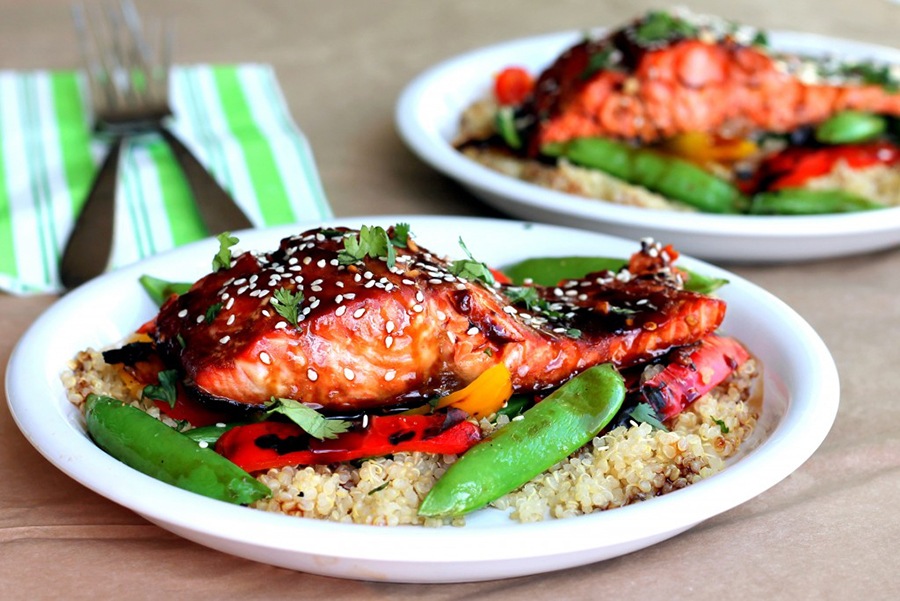
Sesame Ginger Sweet Teriyaki Salmon with Garlic Quinoa Stir-fry Via ambitiouskitchen
Equipment:
zip lock bag/wide dish
frying pan
spatula
thermometer
Ingredients:
- 1 pound salmon fillets
- Three tablespoon soy sauce
- ¼ cup of olive oil
- One tablespoon of peeled and chopped ginger
- Two cloves of chopped and pressed garlic
- Three finely chopped scallion
Procedure:
STEP 1 | Prepare the ingredients. Peel your 1-tablespoon of ginger and two garlic cloves. Chop them finely together with your three scallions. You can add other spices if you prefer. You can add some chili, sesame seeds, and oil for an Asian taste. |
STEP 2 | Mix all the ingredients. Mix all your spices with three tablespoons of soy sauce and ¼ cup of olive oil. |
STEP 3 | Marinate. Using your wide dish or zip locked bag, mix your spices with your salmon. Refrigerate for 30 to 60 minutes. To cover all the fish with the spice, make sure you turn bag or dish occasionally. Discard the marinade immediately if you do not want to put it in the pan for sauce, as it had contact with your raw salmon. |
STEP 4 | Cook, your salmon. Sear your salmon in a 125 to 140 degree Fahrenheit on each side. Use your thermometer. If you have none, cook the salmon skin-side down, cooking the flesh side within 15 to 30 seconds once it is opaque to avoid overcooking and ensure juiciness. |
You can also bake, broil, grill, or poach it after marinating
Marinating with Lemon
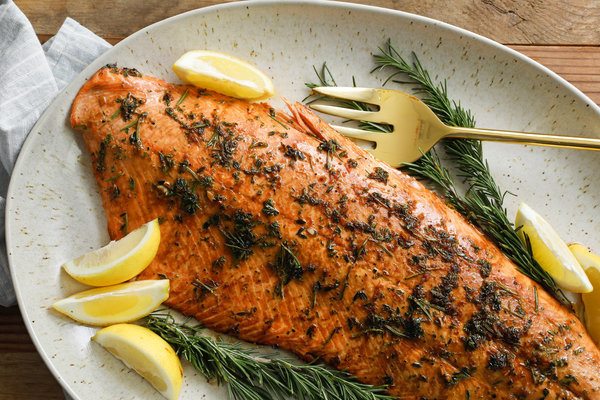
Salmon With Lemon-Herb Marinade Via cooking.nytimes
Equipment:
Spoon
Bowl
Ingredients:
- 1 pound salmon fillets
- One piece of lemon
- Two tablespoons of olive oil
- ½ teaspoon of dried thyme / three sprigs of fresh thyme
How To Marinate Salmon With Lemon Juice - Deliciuos Appetizer! Via Gabriela Bartakova
Procedure:
STEP 1 | Squeeze the lemon in a bowl. Slice your lemon into halves and squeeze the halves into a bowl. |
STEP 2 | Mix other ingredients. Add your 2-tablespoon of olive oil, and your ½-teaspoon of dried thyme. Stir with a spoon until they are well mixed. |
STEP 3 | Pour the marinade. You can use a wide dish or a zip locked bag. Pour your salmon and make sure every side is covered with the marinade juice. |
STEP 4 | Cover and refrigerate. Marinade it while turning once for about 30 minutes. More than 30 minutes of marinating can affect the taste and texture of your fish. Turning or flipping once within this duration ensures that all sides are covered with the marinade. |
STEP 5 | Remove and transfer the fish. Remove the fish and transfer to another dish. Discard the leftovers of the marinade if you do not want to be put in the pan or oven for the sauce. |
STEP 6 | Cook, your salmon. You can grill it by wrapping it with foil. Cook it at 400 degrees Fahrenheit for fifteen minutes. You would know that it is cooked when you can easily remove the flakes using a fork or a spoon. |
Using either of the two marinade recipes, you can cook your salmon in different styles, such as grilling, baking, broiling, etc.
How to Bake Salmon
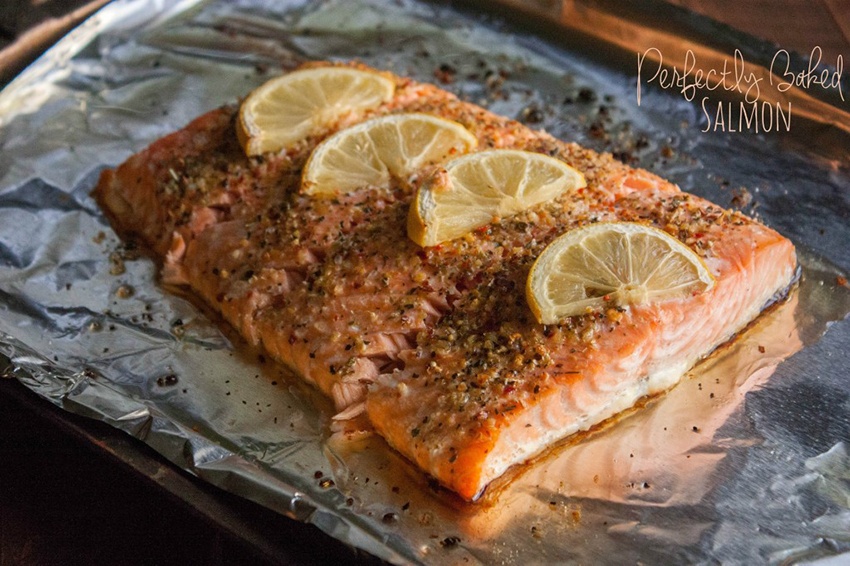
PERFECTLY BAKED SALMON Via sweetphi
Equipment:
Fillet Pan
Foil
Non-stick cooking spray
Paper towel
Ingredients:
- Fresh salmon fillets
- Two tablespoons melted butter
- Salt and pepper
How to Make Baked Salmon Via Allrecipes
Procedure:
STEP 1 | Prepare the oven. Preheat your oven to 375 degrees Fahrenheit. Line the pan with your foil and spray the surface with your cooking spray. |
STEP 2 | Ready your salmon. Pat your salmon with a paper towel to remove water. Place it in a skin-side down position inside the foil-lined pan |
STEP 3 | Pour the other ingredients. Put your butter on the fillets and season with salt and pepper |
STEP 4 | Bake the salmon. Bake it for 10 to 15 minutes or until you can easily remove the flakes using a fork. Better yet, start checking at 10 minutes. Avoid overcooking. |
How to Broil salmon

Broiled Salmon Via olgasflavorfactory
You can use the marinated salmon fillets you had, or you can follow this recipe:
Equipment:
Pan
Rack
Aluminum foil
Non-stick spray
Ingredients:
- One clove chopped garlic
- Two tablespoons olive oil
- Four pieces salmon fillets
- ½ cup butter
- Two tablespoon Worcestershire sauce
- Two tablespoon lemon juice
- ¼ cup white wine
- One teaspoon ground black pepper
- 1 and ½ teaspoon of fine herbs
- ¼ cup of chopped fresh dill
How to Broil Salmon - Quick Cooking Tips - Weelicious Via Weelicious
Procedure:
STEP 1 | Prepare the oven. Preheat the oven’s broiler and put the rack up to 6 inches above the heat. Line the pan with an aluminum foil and apply non-stick spray. |
STEP 2 | Prepare other ingredients. Microwave your garlic clove together with olive oil for 1 and ½ minutes. Melt the butter at low heat and put the garlic mixture. Remove the mixture from the heat and stir the lemon juice, Worcestershire sauce, white wine, black pepper and subtle herbs together. |
STEP 3 | Prepare your salmon. Place your salmon fillets skin-side down on the foil-lined pan. Pour 1/3 butter sauce on the fillet and sprinkle the dill. |
STEP 4 | Broil for 3 minutes. Turn the salmon to cook evenly. Do not forget to baste it with butter sauce. Broil again for three mins. Turn the fish facing up and then baste with butter sauce; broil for 3 minutes until cooked, or until you can easily remove flakes with a fork. |
How to Pan-Fry Salmon
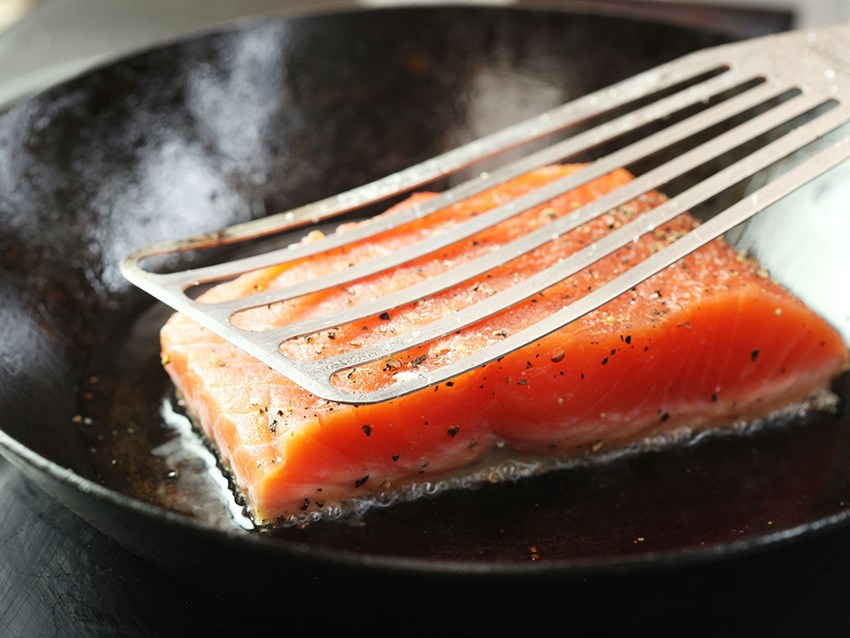
How to Make Pan-Fried Salmon Fillets With Crispy Skin Via seriouseats
Equipment:
Pan
Spatula
Ingredients:
- 2 Salmon fillets
- Two tablespoons of butter
- Salt and Pepper
- Lemon
How to Pan Fry Salmon Via tablespoonrecipes
Procedure:
STEP 1 | Melt the butter in the pan. After melting the butter, add your salmon skin-side down. |
STEP 2 | Season the fish. In the pan, season your salmon with salt and ground black pepper. You can also squeeze a little lemon juice into the pan |
STEP 3 | Fry. Fry for 2 to 3 minutes. Turn the salmon over and fry for another 2 minutes to make sure all sides are evenly cooked |
If you happen to have a frozen salmon, read How to Cook With Frozen Seafood.
How to Roast Salmon in the Oven
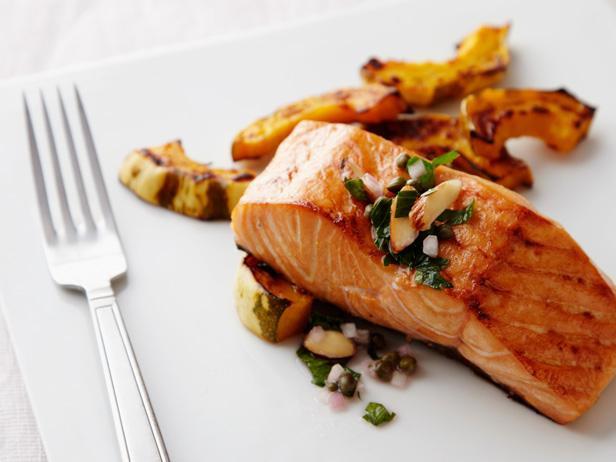
Oven-Baked Salmon Via foodnetwork
Equipment: Fillet Pan
Ingredients:
- Fresh salmon fillets
- Two tablespoons melted butter
- Salt and pepper
How to Roast Salmon Via DearMartiniKitchen
Procedure:
STEP 1 | Ready your salmon. Pat your salmon with a paper towel to remove water. Season it with salt and pepper. |
STEP 2 | Place your salmon. Place it in skin-side down in a lightly buttered-greased sheep pan |
STEP 3 | Bake the salmon. Bake is for 12 to 15 minutes at 400 degrees Fahrenheit. You don’t need to flip the fish. Cook it until a fork can easily remove flakes |
How to Take Salmon From Skillet to Oven
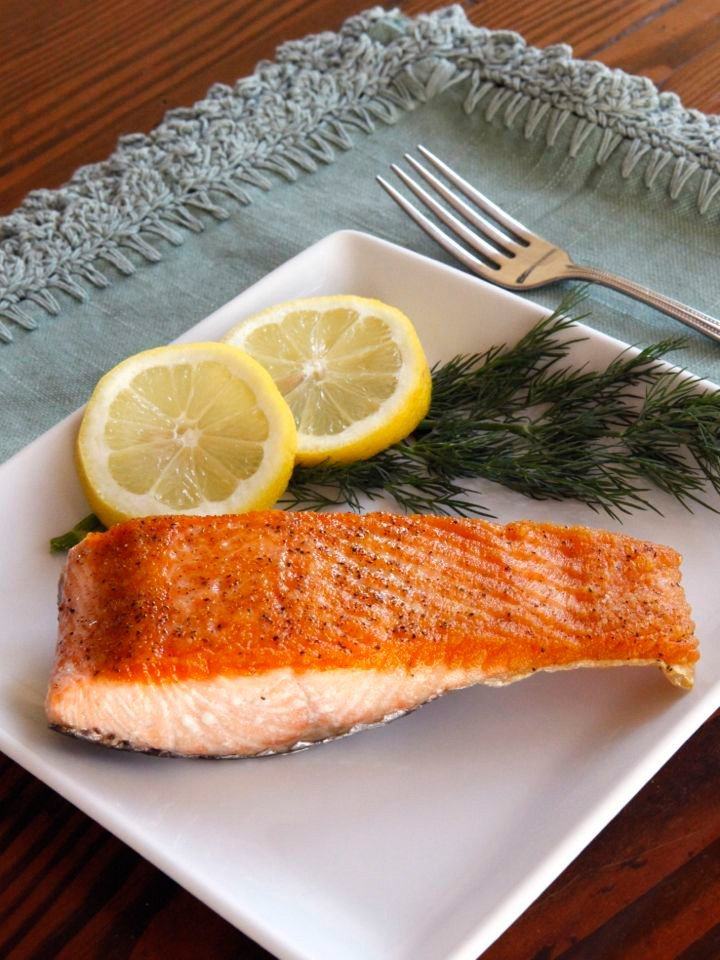
Via toriavey
When you can’t decide if you want to use stovetop or oven, you can do both.
Equipment:
Skillet
Ingredients:
- Fish fillets
- Butter
- Olive oil
Procedure:
STEP 1 | Start is in the oven-proof skillet. Place your salmon in skin-side down and sizzle it in 3 minutes with butter and olive oil. |
STEP 2 | Transfer it to the heated oven and cook it within 20 minutes at 275 degrees Fahrenheit. |
STEP 3 | Retake it to the oven. Cook at high temperature for 3 minutes until you see achieve the desired crispiness of the skin. You can also raise the temperature to 400 degrees Fahrenheit during the roasting phase and then cook it for about 10 minutes in the oven. |
How to Grill Salmon
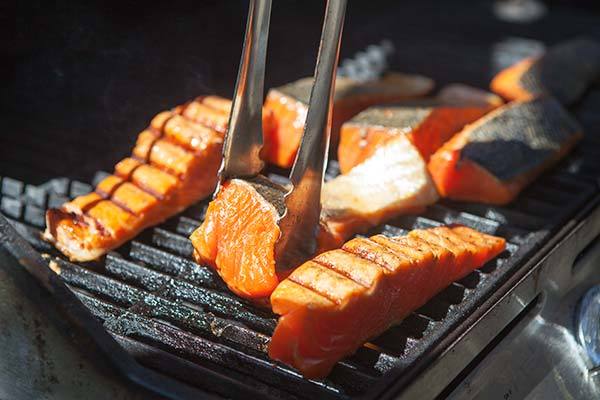
Easy Grilled Salmon Via simplyrecipes
Equipment:
Coals
Griller
Spatula
Grater
Ingredients:
- Marinated fish fillets (look up marinating fish fillet section)
- Oil
How To: Grill Salmon Via Food.com
Procedure:
STEP 1 | Prepare your griller. Put your coals and light. Wait until they are hot enough for cooking. |
STEP 2 | Oil your marinated fish fillets |
STEP 3 | Place one by one on the grate with skin-side down position. Flip after every five mins. |
STEP 4 | In turning your salmon, slide your spatula beneath the fish. If it is sticking to the grate, you need to give it another 2 minutes rest on the heat |
STEP 5 | Flip your salmon for another five mins. for each side and check if it is done |
How to Poach Salmon
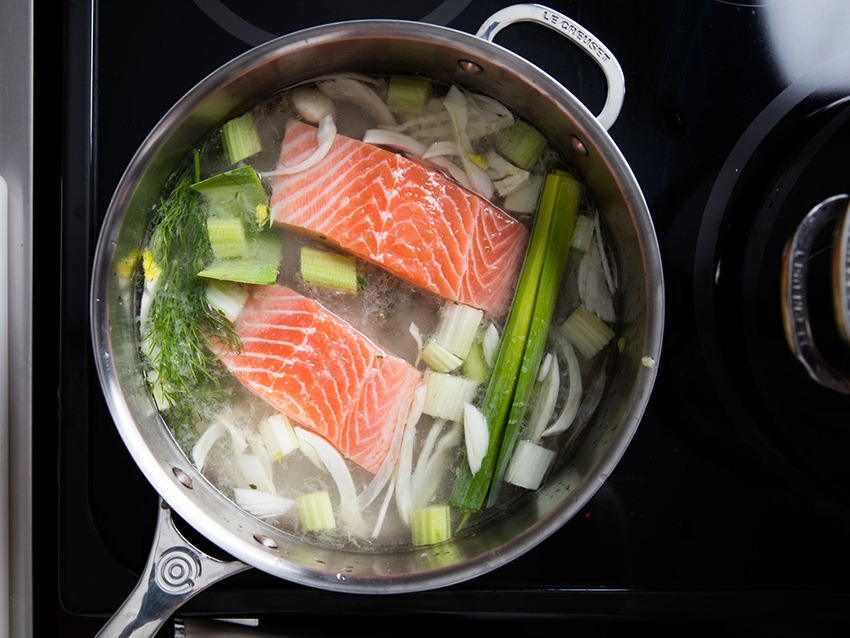
The Best Way to Poach Salmon Via seriouseats
Equipment:
Ingredients:
- Four skinless salmon fillets
- One small onion, peeled and sliced into halves
- One celery stalk, cut into pieces
- ½ lemon, sliced in halves
- Two carrots, cut into 1 inch
- ½ teaspoons salt
- 6 cups water
Easy Poached Salmon Via MrsFineFettle
Procedure:
STEP 1 | Prepare the ingredients. Cut the carrots into small pieces, one-inch
|
STEP 2 | Combine. In your skillet or pot, combine the carrots, onion, celery, lemon, ½ teaspoons of salt, and 6 cups of water |
STEP 3 | Cook. Bring the liquid and the ingredients to boil for at high temperature. When boiled, put the heat on low, cover and cook up to eight mins |
STEP 4 | Season your salmon with coarse salt and gently put into the liquid |
STEP 5 | Put at low temperature to simmer |
STEP 6 | Cook your salmon for about five mins. or until it is opaque |
STEP 7 | When cooked, remove it with your spatula |
How To Salt Cure Salmon At Home
Equipment:
One small glass bowl
One dinner plate
Needle nose pliers
Ingredients:
- Fresh salmon (cut into two)
- 2 tbsp of kosher salt
- 1 tbsp of smoked salt
- 1 tbsp of cracked pepper
- ¼ cup of brown sugar
Scandinavian Salt Cured Salmon (Gravlaks) Via Good Cookery
Procedure:
STEP 1 | Make your brine. Start by mixing the two salts, pepper, sugar and water in a zip locked bag or small bowl. Make sure that everything is mixed thoroughly especially the sugar. Set aside. |
STEP 2 | Check for pin bones. Run your finger along the flesh to make sure no pin bone is left. You can use the needle pliers to remove any pin bone you find. Read How to Pull out Pin Bones for further instructions. |
STEP 3 | Lay out plastic wrappers on your countertop, for about 3 feet in length |
STEP 4 | Place the fillets on the plastic and season with your brine thoroughly |
STEP 5 | Fold and the two fillets together and wrap them with the plastic to keep the brine mixture. Avoid wrapping them too tight. |
STEP 6 | Pat the fish dry and put it in the refrigerator |
Canned Salmon
If you are using a canned salmon, do not worry. It has benefits. Some of these are: they stay fresh longer, cheaper, and they have the same amount of nutrition as the fresh ones. Read Benefits of Eating Canned Salmon. It is also very easy to use in different dishes.
Canned Salmon Recipe - Salmon Burgers Via Chef Buck
Here are some canned recipes:
TIPS AND TRICKS
How To Buy Fresh Salmon
After choosing between a farmed salmon and a wild salmon, there are two other factors you need to consider. These are the variety and the meat cuts.
Choose your preferred salmon variety
- Atlantic Salmon - these salmon are usually farmed and thus have some dye, hormones, and chemicals in their food diet. Although they are widely available at a lower price, the Environmental Defense Fund recommends you to eat not more than once in a month due to its high levels of Polychlorinated Biphenyls, a highly toxic chemical.
- Coho Salmon – this variety cam be harvested from July to October. It has a mild flavor and is commonly used in the kitchen.
- Chinook salmon – this variety is also known as Black Mouth salmon and can be caught between the months of May and August. They are the largest among the Pacific salmon and have a very red meat. These salmon also have the highest levels of Omega 3 fatty acids.
- Chum Salmon – this variety is also called as Keta and is available from June to September. When it comes to the meat, it has a mild taste and firm flesh. Because of vast harvest and its abundance, you can see and buy this variety at a moderate price.
- Socket Eye Salmon – these salmon are smaller than other types. They can be seen in the market from May to July. When it comes to the meat, it has a sweet and mild taste, which is why it is used in many seafood restaurants.
Select Salmon Cut
- Whole Salmon – smaller varieties of salmon like Keta or pink salmon can be purchased in whole. You would need to remove the bones by yourself.
- Salmon Steaks – Steak cut is cut between the head and the tail. The butcher would cut perpendicularly and remove the wedges. He would also leave some portion of the backbone. We recommend you to buy steak cut that has at least 1-inch thickness.
- Salmon Fillets - fillets are commonly bought. They flesh are cut and removed from behind the head down to the tail, giving you an intact fish flesh, with no bones left. This is ideal especially when you want to cook your salmon for easier preparation.
How to Prepare Salmon before Cooking
After choosing between wild and farmed salmon, the variety you like to cook, and the cut you want, it is time to prepare your fish for cooking. There are various methods you need to consider:
Knife Cut: Cleaning and Preparing Salmon Via Schmidt Brothers
Remove the skin. If you prefer it to be skinless, remove the skin by:
- Place the salmon cut on the cutting board skin side down. Sprinkle with salt to make the fish less slippery. Use your knife to cut between the flesh and skin slowly until the skin can be pulled away from the meat.
- Discard the skin, or you can use it in other recipes
Find and remove bones from the salmon. Glide your finger along the flesh to feel the bones. You can use your finger to remove the bones if you found any.
Season, the salmon. Using our marinating recipe above, season your salmon with your preferred recipe and ingredients.
Select a cooking method. In section 3 in this article, you are provided with different dish recipes. You can poach, grill, and pan-fry your salmon fish.
How To Make Sauces For Salmon Recipes
A. Emulsions and butter sauces
Seared Salmon With Lemon Butter Sauce Via Dishin With Di
Sauce no. 1
Ingredients:
- ¼ sour cream
- 2 tbsp heavy cream
- ¼ cup Dijon mustard
- 2 tbsp honey
- 3 tbsp finely minced dill
- One lemon juice
Preparation
Sauce No. 2
Ingredients:
- 2 tbsp chopped shallots, fined
- 3 tbsp fresh lemon juice
- 6 tbsp cold butter
- 1 tbsp chopped dill
- 1 tbsp chopped chives, fined
- ¼ cup white wine
- 1/8 teaspoon pepper
Preparation
B. Herb Sauce
Ingredients:
Serving: 4 8-punce pieces of salmon fillet
- 1/3 cup heavy cream
- 1/3 cup sour cream
- One teaspoon lemon juice
- 2 cups fresh bread crumbs
- ½ cup fresh parsley leaves, chopped
- ½ cup fresh basil leaves, chopped
Preparation
Baked Salmon with Herb Dijon Sauce Recipe Via Ariyele Ressler
C. Salsas and Romesco
Serving: 2 cups of sauce
Ingredients:
- 12 blanched almonds
- 10-12 hazelnuts, remove skin
- 1 cup virgin coconut oil
- ½ cup red wine
- ¼ teaspoon pepper flakes
- One head garlic
- Two pieces ripe medium-sized tomatoes or 1 large tomatoes
Salmon & Romesco Sauce Recipe Via SORTEDfood
Preparation
How to Deskin & Slice Salmon Sashimi
Equipment:
Sashimi knife or any sharp knife
Cutting board
How to Cut Salmon for Sashimi and Nigiri Via Fish for Sushi
Procedure:
STEP 1 | Remove the back’s center and the belly loin |
STEP 2 | Trimmed what you cut in sizes appropriate for sashimi cooking. |
STEP 3 | Sashimi slices can be obtained by cutting the salmon into cubes or chunks. Cut the salmon into long strips by 1cm x 1cm and slice them into cubes. |
STEP 4 | Make your slicing motion as smooth as possible |
STEP 4 | Cut. Make sure that you have a very sharp knife and that your index finger is placed rightly on the blade while cutting. Make sure that your index finger has a firm position and is pushing onto the backbone of the knife while the other four fingers are holding the handle |
Watch THE VIDEO for further instructions.
How to Cut Salmon Fillets

Cut salmon Via virtualweberbullet
This process may seem to be tiring and daunting, as this requires patience to learn.
However, learning filleting your salmon avoids the chance of having a bony flesh or wasting meat.
Equipment:
Serrated knife
How To Fillet a Salmon Via Cabela's Cooking
Procedure:
STEP 1 | Open the belly. Place the fish on the cutting board. Hold the tail with your one hand and insert the knife into the vent or the anus, and then pull the knife from the vent. Stop between the gills.
|
STEP 2 | Cut the fish back to the belly. Start cutting at the backbone above the fin. Press the knife to feel the spine and then cut down behind the fin to the belly. |
STEP 3 | Flip over the fish and cut from belly to back. Reverse the process in step 2. Cut in the same fashion |
STEP 4 | Place the salmon on its belly and cut off the head straight through
|
STEP 5 | Remove the kidney and the remaining fins |
STEP 6 | Remove the meat from one side by inserting the fillet knife at the end near the head, above the backbone. Have a gentle cutting motion, cut through the ribs, and separate the flesh from the spine. |
STEP 7 | Repeat the process on the second fillet |
STEP 8 | Remove the pin bones with needle-nosed pliers |
STEP 9 | Trim the fatty tissues in the belly area. Discard if you do not like its taste |
STEP 10 | Rinse the fillets with cold water, dry and keep them in the refrigerator for future cooking |
Watch THIS VIDEO to know how to fillet salmon at home.
How to Freeze & Defrost Salmon
Salmon is best when cooked fresh after buying. However, circumstances require you to set aside the fish in the refrigerator for future cooking. You need to know that freezing and defrosting salmon have guidelines you need to follow to prevent ruining the flavor or contaminating the whole fish.
How to Store, Freeze & Defrost Via TassalSalmon
A. Freezing Salmon
If you want to freeze your it, make sure that it is still fresh. If you have a whole salmon, make sure that it is rinsed clean of blood and viscera. If you have steaks or fillets, make sure you wrap them individually or layer them with waxed paper for easier separation.
Make sure that you place them in the coldest part of the freezer – directly against the freezer floor and away from the ref’s door. Here are other things you need to consider:
- Keep it frozen at a constant temperature of -18 degrees C
- Use smaller package for faster freezing
- Avoid refreezing salmon (do not freeze those that have been previously frozen
- Place the current date on the salmon wrapping to keep track
B. Defrosting Salmon
There are three ways to defrost. These are:
Ref’s defrosting
- Remove the salmon from the freezer 12 hours before cooking.
- Unwrap the aluminum foil or any wrappers you used
- Put the fish in the shallow bowl
- Place the salmon in the refrigerator and away from other foods at 35 to degrees F
- Cook after removing from the fridge
Sink defrosting
- Remove the salmon from the freezer
- Place it in a large bowl and fill it with cold water, enough to make it wholly submerged
- Change cold water every 30 minutes
- Remove the fish after it is thawed and cooks
Microwave defrosting
- Remove the packaging and place the fish on the plate covered with paper towels.
- Place the thinnest parts in the middle of the plate
- Use the defrost setting and heat for 4 to 5 minutes for every 1 pound of salmon (power 3)
- Stop the microwave halfway through the time and flip the fish over
- Continue defrosting
- Place the plate on the counter for 5 minutes to finish defrosting
How to Prepare Sashimi/Raw Fish
Sashimi is a simple yet elegant Japanese delicacy. You need to have a fresh and quality salmon to be able to come up with a perfect sashimi.
Equipment:
Preparation
STEP 1 | Prepare the fish. Japanese markets have a very well trimmed and quality fish that is ready to be sliced and served in a sashimi style. Other things you need to make sure:
|
STEP 2 | Prepare the fish. Cut and trimmed the fish into one to two-inch wide by a half to one-inch long fillet. Cut the salmon into 1/4 –inch thick slices. You can also cut it into thinner slices |
How to Prepare Salmon for Sushi & Sushi Rolls
Have you ever wondered what does sushi taste like? click here to find out the taste of sushi?
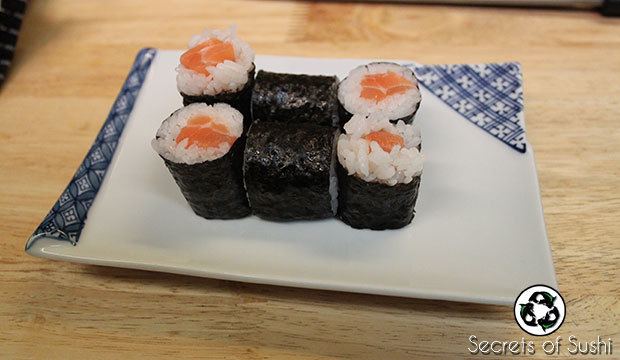
SIMPLE SALMON ROLL Via secretsofsushi
Equipment:
One sharp knife
Cutting board
Hand towel
Ingredients: Salmon fillets
Preparation
There are kinds of slices and cut that best work with sushi rolls. One method is slicing it in a rectangular for your roll. Make a 1 cm thick slice and slice it in half. Although you can experiment with the sizes depending on the size, you want your sushi rolls to have, most people suggest that 1 cm thick slice is a good cut.
How to Reheat Salmon?
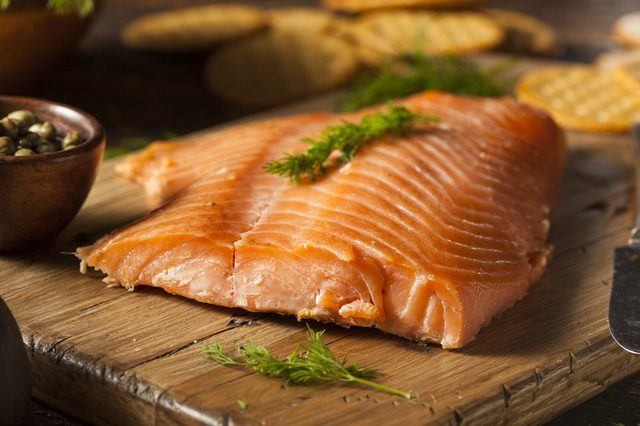
How to Reheat Smoked Salmon Via leaf
Reheating your salmon can be easy. If you want to bring your leftover salmon to work for lunch the next day, you can always use a microwave for convenience.
Procedure:
STEP 1 | Preheat the oven to 325 degrees Fahrenheit |
STEP 2 | Place salmon in a dish with a little water on the bottom to avoid the salmon from drying |
STEP 3 | Brush some butter on top of the salmon to add moisture and flavor |
STEP 4 | Wrap the salmon with aluminum foil |
STEP 5 | Put your wrapped salmon on the oven rack and let it cook for 15-20 minutes at very low temperature |
STEP 6 | Enjoy. You are ready to use the salmon again in your new recipe! |
Tips to Perfect Salmon
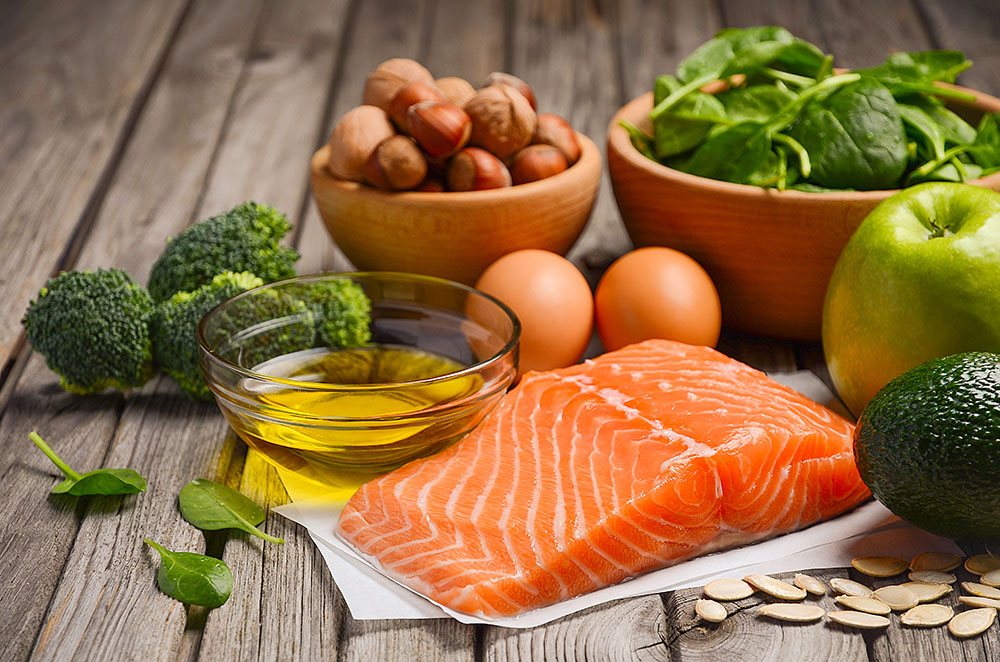
A perfect salmon is a result of a good and careful method of cooking and dressing it up. Here are some tips to make a perfect salmon you could ever have and some hacks you can try!
- Slow cooking fits best for salmon. Although salmon does not have a very firm meat, slow cooking for an hour can make your salmon very tender, moist, and flavorful especially when you cook it with olive oil and some herbs.
- You will know that your salmon is done when you can pull off the flakes easily with a fork. When you do not have any temperature to check the doneness, this is the most accurate guess that your salmon is already done and ready to eat.
- Another hint that your salmon is done is that it goes from translucent to opaque
- Overcooking can create that unappetizing soft white stuff called albumin that comes out on the salmon’s surface. So avoid overcooking.
- When you want a very delicious salmon, choose wild than farmed salmon
- King Salmon is the most expensive, but most delicious, claimed by most people
- When you are grilling or pan-frying, keep the skin on one side
Read Tips for Cooking Salmon like a Pro
COMMON MISTAKES WHEN COOKING WITH SALMON
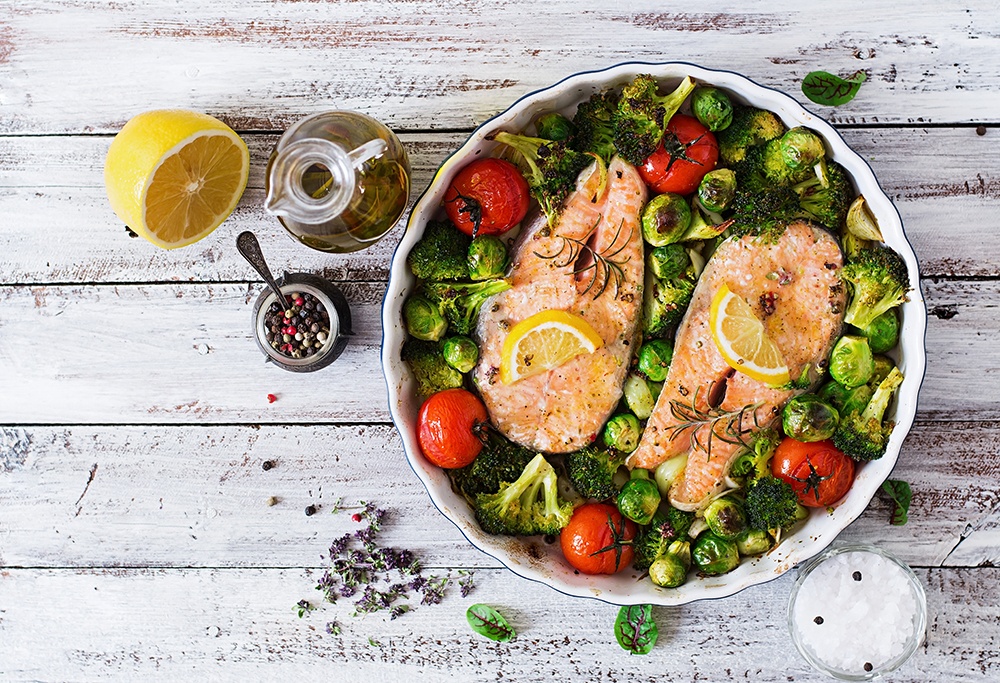
Whenever you make a salmon meal, there is always a possibility that you encounter some errors during preparation and cooking. No matter how easy the dish can be factors such as inexperience, bad equipment, bad recipes and a quick fix can quickly become quick trash filler.
Here are some common mistakes everyone makes when cooking a salmon:
- You buy a cheaper but bad quality fish. This is why buying wild salmon is far greater than farmed salmon
- You thaw it in a wrong way. Although you can thaw your salmon in the microwave, you should expect that you won’t get the same quality and taste of the original salmon. Another mistake is that you overheat your salmon at high temperature. You can thaw the frozen salmon by leaving it overnight in the ref (not in the freezer. Follow the three ways provided in this article)
- You remove the skin. Although you can opt for removing the skin when you prefer, the skin protects the flesh from germs and bugs even after death. Unless you are poaching the salmon, leave the skin on the fish
- You season it too early. Salt and pepper need to be applied to salmon few minutes before the actual cooking because salt removes the moisture and makes your salmon cured
- You touch it too much. Once you put the salmon in the heat, you need to leave it alone because salmon meat is sensitive and is not firm enough to remain compact under constant pressure. Avoid disturbing it while the fish is in the pan
- You cook the fish skin-side up. It is better if you start cooking the salmon skin-side down because it protects the flesh from overcooking
- You do not remove the pin bone. Although they can be very tricky to find, you need to spend some minutes in gliding your finger, feeling the bones to remove them. You can ask the fishmonger to remove the pin bones for you
EXPERT’S ADVICE
Either you are selecting a salmon variety or cooking the fish; you can always gain insights from the food blog experts. Consider the following advice:
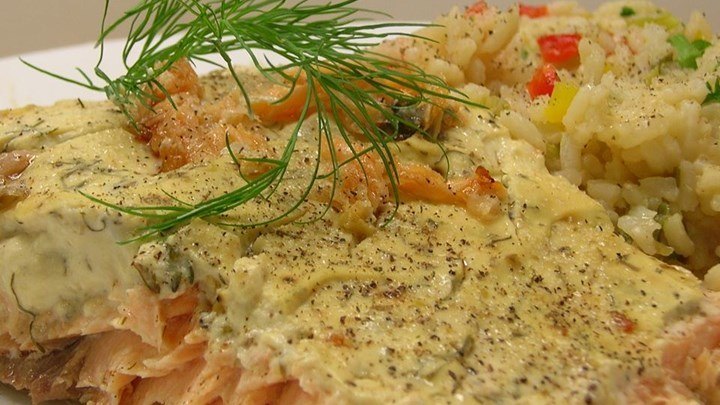
Salmon Fillets with Creamy Dill Via allrecipes
"Aluminum foil can be used to keep food moist, cook it evenly, and make clean-up easier.”
– Jessie D., Salmon Fillets with Creamy Dill
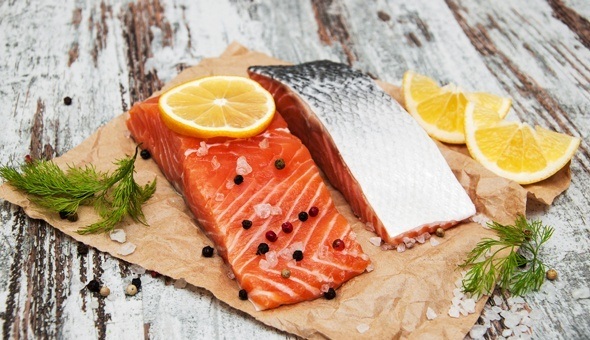
Health Benefits of Salmon Via authoritynutrition
“Salmon has a delicious flavor and can be prepared in many different ways. Canned salmon is a convenient and inexpensive option.”
- Franziska Spritzler, 11 Impressive Health Benefits of Salmon
“Salmon is often sold in fillets or steaks with the bones removed. Always ask if the pin bones have been removed. If not, you'll need to remove each pin bone with a pair of tweezers.”
– Wiki How, How to buy fresh salmon
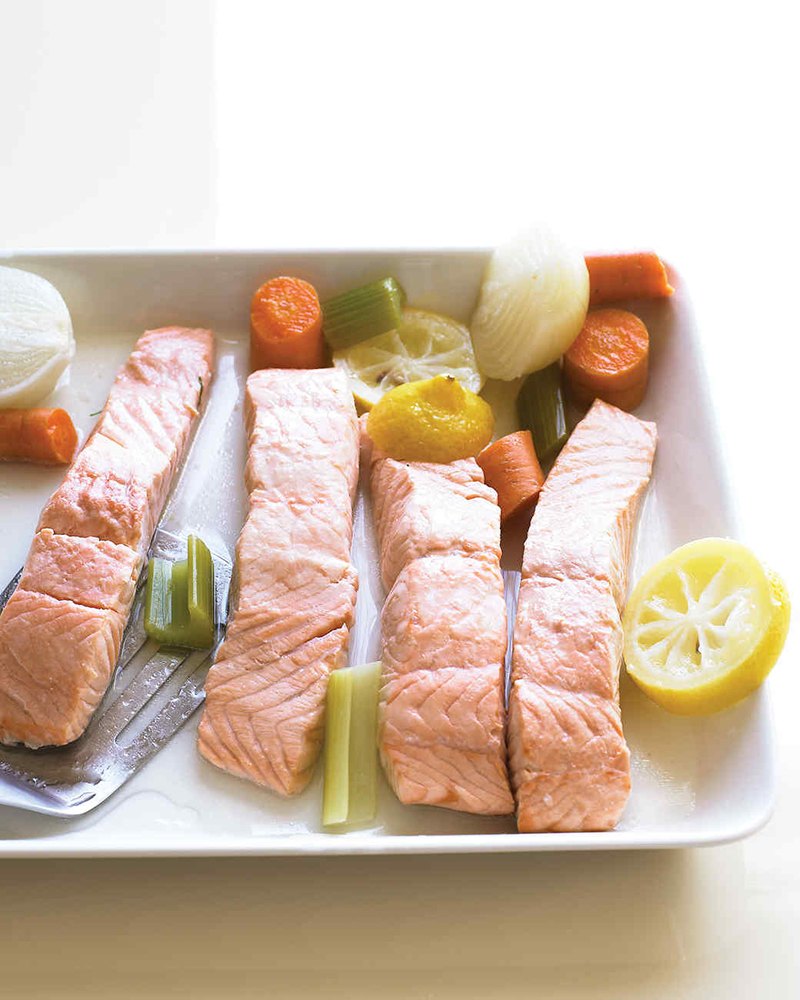
Simple Poached Salmon Via marthastewart
“A beautifully poached piece of salmon is clean tasting and light. There's only one rule: Don't overcook.”
– Martha Stewart – Simple Poached Salmon
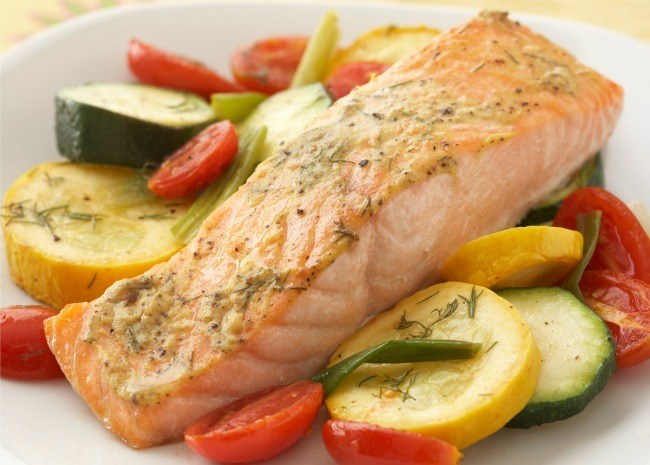
How to Cook Salmon Six Ways Via allrecipes
“If you find a good deal on flash-frozen wild salmon fillets, buy a bunch; store them in your freezer, and thaw them during the work week for quick meals.”
– Carl Hanson, How to Cook Salmon in Six Ways
BEST RECIPES WITH SALMON
Salmon Fillet Recipe
Salmon Fillets with Creamy Dill is one of the most delicious dishes that you can create with your salmon fillet. This provides a nice touch of salmon flavor with some spices and herbs.
Salmon Recipe (Salmon Fillet) Via Aashpazi.com
Ingredients:
- 1 ½ pounds salmon fillets
- 1 ½ cups mayonnaise
- ½ cup mustard
- One teaspoon dried oregano
- One teaspoon chopped basil leaves
- One teaspoon chopped fresh thyme
- Two teaspoons dried dill
Procedure:
STEP 1 | Preheat your oven to 375 degrees Fahrenheit |
STEP 2 | Mix the mayonnaise and mustard in a bowl. Add the thyme, oregano, and basil into the mixture |
STEP 3 | Place your salmon fillets on a baking sheet and spread with the mayonnaise and mustard. Add some dill weed |
STEP 4 | Put and bake the salmon on the preheated pan for 30 - 40 mins |
STEP 5 | It is done when you can easily remove the flakes with a fork |
Read Ways to Cook Your Salmon Fillets for other recipes.
Salmon Sushi Recipe
Hosomaki Salmon Sushi has a basic recipe yet it is very delicious for a salmon sushi. You can add your preferred spices and herbs in this recipe since it does not require many spices in its original recipe.
Simple Salmon Sushi Via Jamie Oliver
Equipment:
One sharp knife
Cutting board
Hand towel
Ingredients:
- 1 cup seasoned Sushi rice
- Makisu (preferably wrapped in cellophane)
- Five half-sheets if Nori
- One bowl of water
- ½ pound of salmon fillet
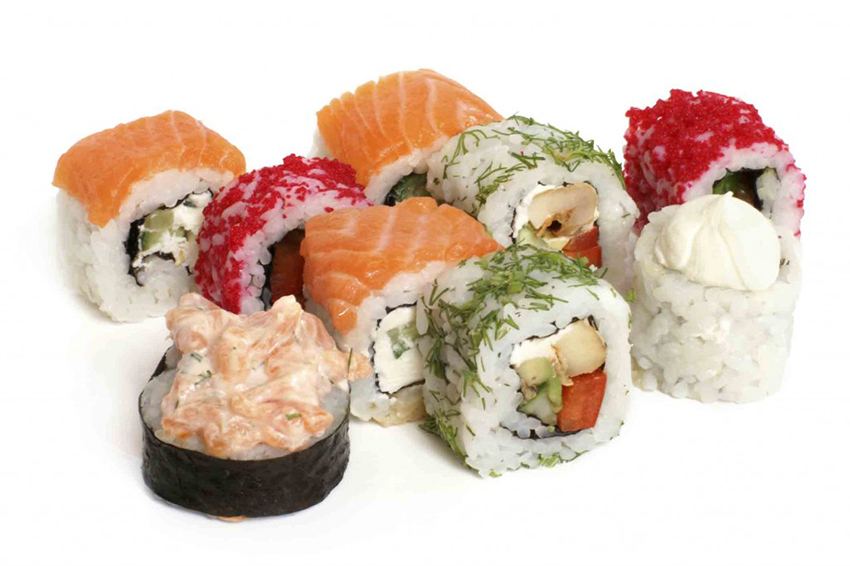
HOW TO ROLL SUSHI Via secretsofsushi
Procedure:
STEP 1 | Cook your sushi rice with a good rice cooker (for more information, read How to Make Sushi Rice). Once your rice is cooked, place a handful of rice on the rough side of Nori. Leave at least 2 cm of nori bare at the top of the roll |
STEP 2 | Using your finger, press the rice along the center to create a valley |
STEP 3 | Slice your salmon in a rectangular for your roll. Make a 1 cm thick slice and slice it in half |
STEP 4 | Place the sliced salmon in your rice’s valley |
STEP 5 | Dip your finger in water and put some moist on the top portion of nori. This makes the nori soggy, and it would start to curl. Roll the salmon until it is smooth side meets the wet portion. (For more sushi rolling technique, CLICK HERE) |
STEP 6 | Once rolled, slice the roll in half, and slice into thirds |
STEP 7 | Enjoy |
Salmon Sashimi Recipe
There are many ways to enjoy your Salmon Sashimi, and this includes combining it with Ginger and Hot Sesame Oil. Although raw, you can still have that delicious salmon flavor with the herbs and spices in the ingredients. The sesame seeds and ginger give a push of flavor that intensifies the fish taste.
Ingredients:
- One teaspoon fresh lime juice
- One teaspoon fresh orange juice
- One teaspoon Asian sesame oil
- 1 ½ teaspoons roasted sesame seeds
- 1 tbsp snipped chives
- 2 Tbsps grape seed oil
- ¼ cup plus 2 tbsp low-sodium soy sauce
- One ¼ inch piece of ginger, sliced thin
- Twelve pieces of 1/8 inch thick slices of salmon
Cooked Salmon Sashimi Recipe Via How To Make Sushi
Procedure:
STEP 1 | Mix 2 tbsp of soy sauce, lime, and orange juice in a small bowl. Set aside |
STEP 2 | Toss the salmon with ¼-cup soy sauce, let it stand and drain after 1 minute |
STEP 3 | Arrange three slices of salmon on plate and top with ginger and chives |
STEP 4 | Prepare the pan and heat the grape seed oil with sesame oil in a moderate-high temperature for 2 minutes. |
STEP 5 | Drizzle the hot oil over the salmon and spoon the citrus-soy sauce on the top. |
STEP 6 | Add a touch of roasted sesame seeds and cilantro leaves |
STEP 7 | Serve |
Salmon Burger Recipe
This salmon burger recipe gives you a meaty patty with a strong flavor of pepper and parsley that creates a good combination of flavors.
Ingredients:
- One can of salmon, drained and flaked
- Two pieces of eggs
- 2 tbsp chopped onion, fined
- 2 tbsp lemon juice
- 1 tbsp vegetable oil
- ¼ cup chopped fresh parsley
- ¼ cup bread crumbs
- ½ teaspoon dried basil
- One pinch red pepper flakes
Ingredients for the dressing:
- 1 tbsp lemon juice
- 2 tbsp light mayonnaise
- One pinch dried basil
Salmon Burger recipe Via stevescooking
Procedure:
STEP 1 | Mix the salmon, eggs, onion, breadcrumbs, parsley, 2 tbsp of lemon juice, and ½-teaspoon basil and red pepper flakes in a bowl. Mix thoroughly and form packed patties about ½ inches thick. |
STEP 2 | Pour oil into a heated skillet. Put the heat on medium |
STEP 3 | When the oil is hot enough, place the patties and cook them for 4 minutes per side, or until they are, have a brown color. While cooking, you can prepare the dressing |
STEP 4 | Prepare the dressing. Mix the mayonnaise, 1 tbsp of lemon juice and a pinch of basil in a small bowl.Step 4: Place the patties on your bread and pour the mayonnaise sauce. |
STEP 5 | Serve |
Salmon Salad Recipe
Ingredients:
- One bell pepper, diced (any color)
- One cucumber, peeled and diced
- ½ cup chopped onion
- ½ lemon juice
- Five tablespoon mayonnaise
- Two hard-boiled eggs, crushed
- 2 cups cooked and flaked salmon
- Salt and pepper
Salmon Salad Recipe - My Favorite Picnic Food! Via Fifteen Spatulas
Procedure:
STEP 1 | Toss the crushed boiled eggs and salmon in a large bowl |
STEP 2 | Combine cucumber, bell pepper, onion, and mayonnaise in another bowl. Add seasonings (salt and pepper) and stir |
STEP 3 | Pour the mixture over the salmon |
STEP 4 | Add the lemon juice and toss lightly to mix |
STEP 5 | Serve it with bread or lettuce |
Salmon Pasta Recipe
One perfect salmon pasta recipe is the Creamy Smoked Salmon Pasta, which you will surely enjoy and love. It combines the smoked flavor of salmon and the creaminess of milk, cheese, and butter.
Equipment:
Skillet
Pot
Spatula
Plate
Ingredients:
- 2 tbsp flour
- 2 tbsp garlic powder
- 2 cups skimmed milk
- 1 cup green peas
- ½ cup drained canned mushrooms
- ½ finely chopped onion
- 6 tbsp butter
- ½ cup grated Romano cheese
- One pack penne pasta
- 10 ounces of chopped smoked salmon
Salmon Pasta Recipe Via Laura in the Kitchen
Procedure:
STEP 1 | Prepare and heat the pot with salted water at high temperature. Add the pasta and cook for 8 to 10 minutes or until al dente. When cooked, drained the pasta and set aside. |
STEP 2 | Place a skillet on the stovetop and melt butter on top of it at a low heat. Sauté the onion in butter until it is tender |
STEP 3 | Add the garlic powder and the flour into the butter and onions. Put the milk and stir. The heating temperature needs to be below the boiling point. |
STEP 4 | Gradually add the cheese and stir while cooking. Stir until the sauce becomes smooth and creamy |
STEP 5 | Put the mushrooms and peas |
STEP 6 | Cook for 4 minutes |
STEP 7 | Toss in the smoked salmon and cook for two minutes |
STEP 8 | Place your pasta on a plate and pour your salmon sauce. Serve |
Salmon Croquettes Recipe
This Salmon Croquettes recipe can be served in less than half an hour. This recipe is an ideal snack for your family. It gives a subtle taste of meaty salmon while giving you a creamy taste of mustard-mayonnaise mixture
Ingredients:
- 1/4 cup organic canola mayonnaise
- 2 1/2 teaspoons Dijon mustard
- 1/4 cup finely chopped green onions
- 1/2 teaspoon garlic powder
- Two tablespoons minced red bell pepper
- 1/8 teaspoon ground red pepper
- 1/4 teaspoon salt
- Four teaspoons fresh lemon juice
- One tablespoon canola oil
- One tablespoon chopped fresh parsley
- One teaspoon finely chopped capers
- 1 cup breadcrumbs
- 1/8 teaspoon salt
- One large egg, lightly beaten
- 2 (6-ounce) packages skinless, boneless pink salmon
How To Make Salmon Croquettes Via PhillyboyJayCooKiNgShow2.0
Procedure:
STEP 1 | Combine the two tbsp of mayonnaise, 1 tbsp lemon juice, 1 and ½ teaspoon of mustard and the next seven ingredients in the list (onions, two peppers, garlic powder, salt, salmon, and egg). Mix and stir |
STEP 2 | Add the breadcrumbs and mix thoroughly. Make patties about 3 inches thick from the mixture |
STEP 3 | Place the skillet on the stovetop over medium heat. Put 1 tbsp canola oil and leave for 1minute |
STEP 4 | Add and cook the patties for 5 minutes on each side or until they are nicely browned |
STEP 5 | Prepare the sauce. Combine the remaining mayonnaise, lemon juice, capers, garlic, salt, parsley, and mustard in a bowl. Mix and stir. |
STEP 6 | Place your patties on a plate and top with the sauce you made. Serve |
Salmon Patties Recipe
These salmon patties recipe is easy to do yet give a delicious way of cooking with your salmon - perfect for lunch, dinner, or snack time.
Equipment:
1 bowl
Frying Pan
Spatula
Ingredients:
- 1 egg
- ¼ cup chopped onion
- ½ cup seasoned breadcrumbs
- 1 tbsp olive oil
- One can of salmon
Salmon Patties - Quick & Easy Via Jenny Can Cook
Procedure:
STEP 1 | Drain the salmon from the can. Do not throw the liquid |
STEP 2 | Mix the egg, onion, salmon, and breadcrumbs in a bowl |
STEP 3 | Mix thoroughly and make into patties. Add the reserved liquid from the canned salmon if the mixture is too dry to form patties |
STEP 4 | Place the frying pan on the stovetop. Put the olive oil and heat over medium heat |
STEP 5 | Place and cook the patties for 5 minutes each side or until it becomes brown |
STEP 6 | After cooking, drain the patties with paper towels. Serve with bread |
NUTRITION FACTS OF SALMON

Eating salmon can be an effective way of eating while expecting lots of nutrients gain. Salmon contains protein, vitamins, and minerals. But what makes it extra special it that it has high levels of omega three fatty acids.
Salmon Nutrition Profile
Every 100 grams of salmon contains:
- 231 calories
- 25g protein
- 85 mg of cholesterol
- 3.2 g saturated fat

Source: USDA National Nutrient Database for Standard Reference
Salmon Health Benefits
- Rich in Omega-3 fatty acids, EPA and DHA, which have been credited with several health benefits such as lowering high blood pressure, decreasing inflammation, improving arteries cells and reducing the risk of cancer.
- Good source of protein, which helps your body recover from injury, helping bones, and helps maintain muscle mass
- Source of multiple vitamins which include:
- Vitamin B1
- Vitamin B2
- Vitamin B3
- Vitamin B5
- Vitamin B6
- Vitamin B9
- Vitamin B12
- Good source of potassium
- Has a mineral called Selenium that helps protects bone health and decreases the risk of cancer?
- It has Astaxanthin, an antioxidant that is proven to treat and prevent many diseases
- Helps you lose weight. Because it is loaded with protein, eating salmon can make you feel full and therefore reducing the risk of overeating food that harms your diet
Salmon is especially Good For Workout
Salmon is a lean protein and has some amino acids, which help you build your muscle during a workout. Aside from this, eating salmon can make you feel full, and so decreases the chances of overeating.
The Omega-3 fatty acids also help reduce post-exercise muscle inflammation. This is why experts would recommend salmon as one of the foods that help you in your workout and exercise.
QUESTIONS AND ANSWERS
What knife do you use to cut salmon (with skin) into smaller pieces?
There are many knives and among of them fish fillet knives are thought to be best to use when dealing with different kinds of fish. On the other hand, you can also buy a salmon knife, specially made for cutting salmon flesh.
How long do you grill salmon in foil?
At medium-low heat, cook your salmon in foil for about 13 to 16 minutes, rotating the packets ½ turn after 7 minutes until the salmon flakes can be easily removed by a fork.
What kind of One do you use for your sushi?
Make sure that your salmon is high quality such as Faroe Island, Skuna Bay, and Wester Ross. Avoid buying salmon from the freshwater lake like Chinook because they have more parasites.
What part of the Two is used for sashimi?

When it comes to the cut portion, the belly part is best for sashimi while the tail part is too lean for sashimi.
The best ranked from A to D, as a called Toro being the best portion for sashimi preparation.
Does smoked salmon need to be cooked or heated before eating? Why or why not?
No. your salmon does not need to be reheated because all hot smoked salmon is cooked at 145 degrees F for 30 minutes, which kills the bacteria. If you do so, you will just ruin the smoked quality of Two as well as removing the nutrients in the fish.
Do you cook salmon with the skin on it?
Removing the skin is a common mistake that most people always do. So the answer to this should be NO. The skin works as a protective layer that prevents bacteria in the flesh. It also protects the delicate flesh against the hot pan.
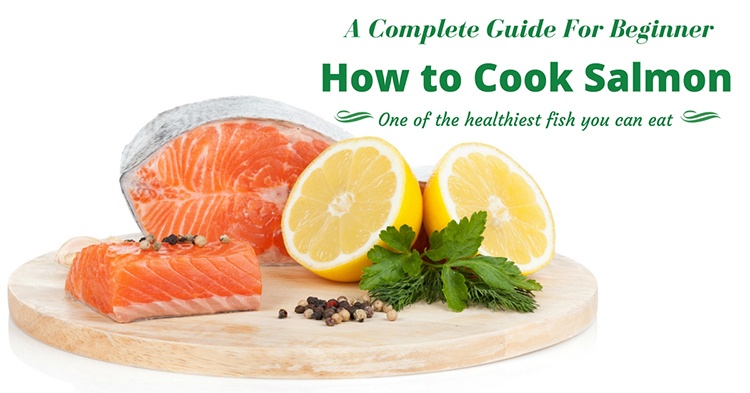






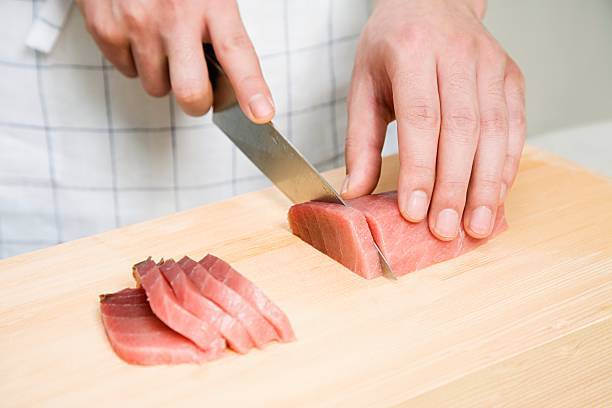

Leave a Reply